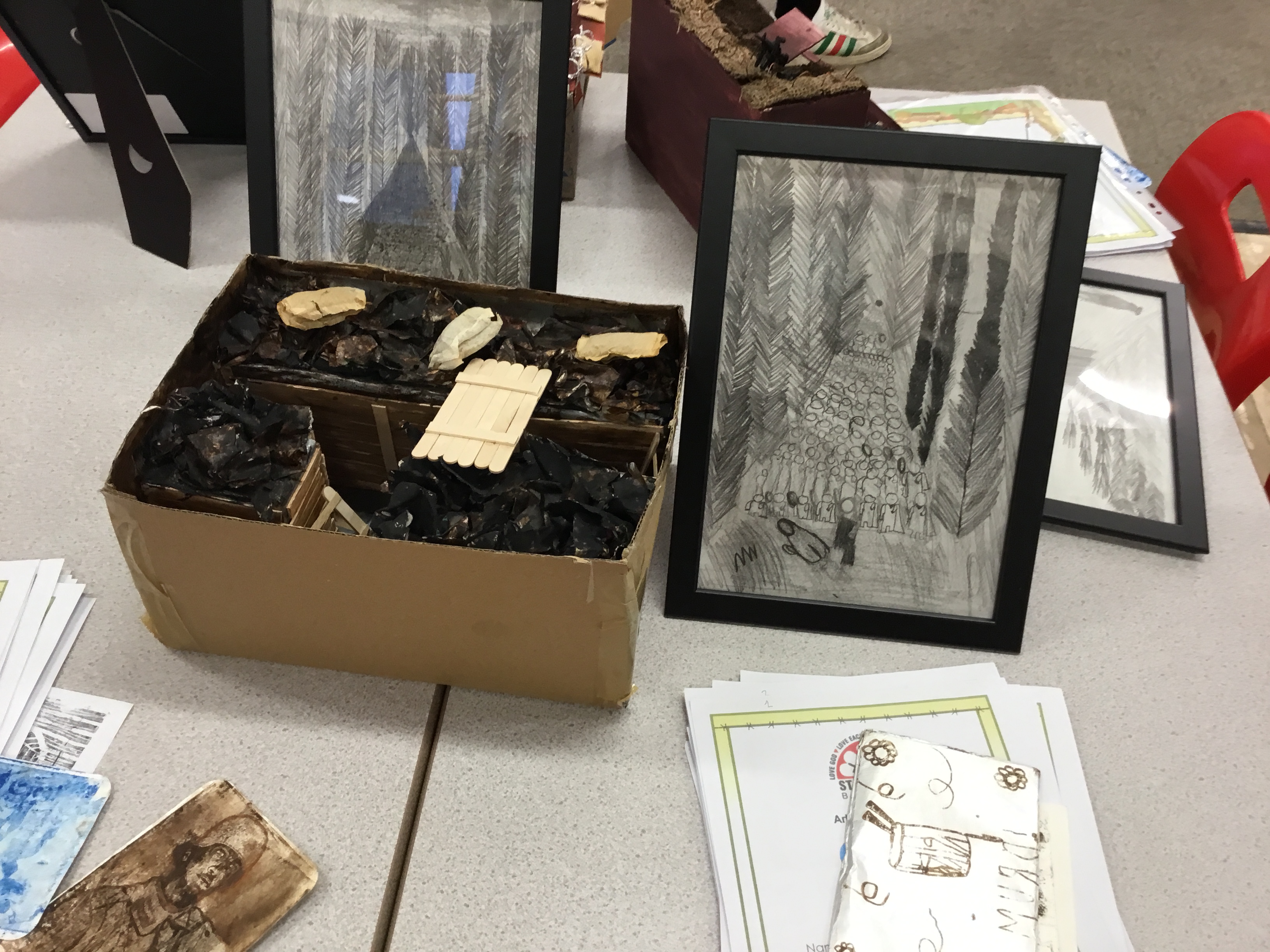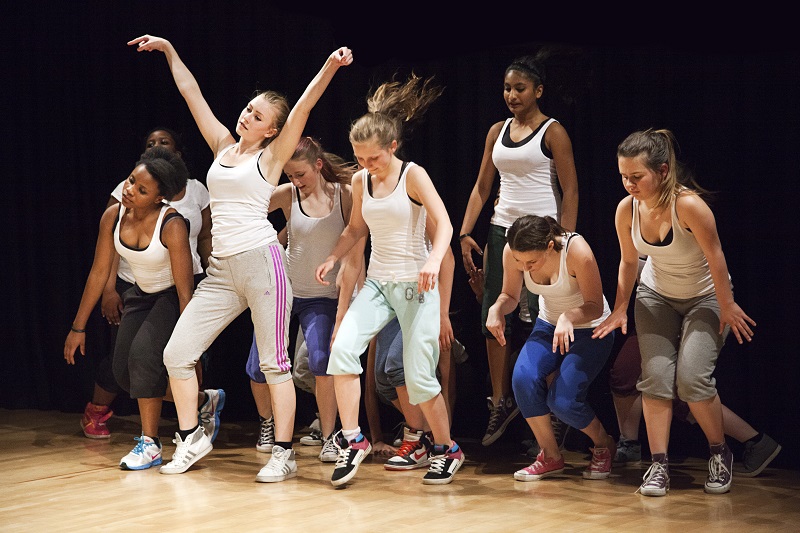
Exploring World War 1 through printmaking techniques
BY: Guest Writer
28 Jul 2025
As part of our celebration of community projects this month, Elaine Lees, Pennine Lancashire Museums and Schools Coordinator at Blackburn Museum and Art Gallery describes their partnership with a local school to deliver an exciting Arts Award Explore project where the pupils found out about World War 1 and learnt some unusual printmaking techniques.
Exploring the Great War
Blackburn Museum and Art Gallery worked with Balderstone St Leonard’s CE Primary & Pre-School to run Arts Award Explore as part of a Year 5 and 6 World War 1 (WW1) topic in the autumn term of 2024.
We’d run Arts Award Discover before but this was our first time delivering Explore. We wondered if it would be too difficult, if the school would commit to the work required and how we would adapt the topic of WW1 to fit the Arts Award framework!
Project planning
We set up an exploratory meeting at the museum over the summer holiday – both the headteacher and class teacher attended, which was invaluable preparation. We showed them which WW1 artefacts we had in our museum and used the Explore adviser toolkit to run through the separate parts of the Award and what we could offer to help fulfil the requirements. The class teacher shared what she had planned for the WW1 topic for the term in order to see how we could build on this and link all parts together, so it made sense to the pupils.
We committed to support divided into two visits to the museum:
- All About the Museum and our WW1 collection
- Printing Postcards Workshops
And the school committed to fulfilling the following:
- Looking at WW1 artist Paul Nash and techniques used in his work (Part B: Explore)
- Running a ‘Share’ event (Part D) where museum staff, parents and carers would be invited and pupils would display their work and talk about what they had learned in their Arts Award Explore journey
- Completing the Arts Award log books during lesson time and making them available in the following half term for assessment by museum staff and gathering the required data for enrolment.
Behind the scenes
The first visit to the museum started with WW1 scene setting, delivered by one of our museum education freelancers who was also an expert in WW1. This involved a physical demonstration with the pupils representing countries taking part in the war and re-enacting a scene from the Battle of the Somme.
This visit was also to find out about the museum as an arts organisation (to fulfil Part B of the Award: ‘Explore’) so the class had a look round the galleries and we pointed out our WW1 artefacts with explanation from museum staff.
Then they had a Q&A session with other museum staff including a Curator, Outreach and Engagement Officer and a Visitor Engagement Assistant who also is focussed on marketing and social media for the museum. The pupils prepared a list of questions including ‘Who pays for the museum?’, ‘How to do you tell people what is going on?’ and ‘Who decides what is in the museum?’.
The pupils also got a sneak peek of a brand-new exhibition called ‘The Secret Life of Stuff’ which was full of everyday objects that local people had donated to the museum. Our curator told them about how exhibitions were put together and how a museum collects items and looks after them.
After lunch the pupils had a self-led sketching session in the social history gallery taking inspiration from our WW1 collection and using the art techniques they had learned in their school art lessons. This work was used as evidence for Part A: Take Part.
Postcards from the trenches
The second visit to the museum was four weeks later where Part C: Create was facilitated. The museum’s fine art curator had searched the archives for some genuine WW1 postcards sent from the trenches over 100 years ago. Pupils were able to handle these (carefully) and read the messages and stories. They looked at the postcard images from the time of the war and worked in small groups to present their thoughts back to the class.
We arranged for a local printmaker artist Julia Swarbrick to deliver two printing workshops across the day. It was great for the pupils to meet a local artist in real life who makes their living creating art, as part of their Explore experience.
The first workshop was Gum Arabic Transfer Printing which involved transferring WW1 images to blank postcards using a special technique and Gum Arabic. This was quite tricky, and pupils definitely learned the art of trial and error!
In the second workshop, the pupils had the opportunity to take part in ‘Kitchen Lithography’ and used household items such as tin foil and cola to create a printing plate and print from this. Using the sketches from their first museum visit as inspiration, pupils created their own unique print onto blank postcards. They used different ink colours, created reverse text, learned how much ink to apply and how simple design creates the most effective result. Postcard prints included symbols from the war such as poppies and medals plus artillery, soldiers, uniform and battle scenes.
In a (speedy) finale to the day we demonstrated a real Columbian printing press from the late 19th century that the museum has on display and is still in working order – some pupils got to have a go at operating the press with Julia’s help. If only we’d had more time to let everyone have a go!
We asked for feedback after each visit to gauge how well we were doing, and this is what the class teacher said:
‘Our morning session was well planned and really interesting. We all enjoyed it. The children were lively and fully participated. The museum had listened to what we were learning at school and expanded on it.
The postcard session was great and allowed the children to look carefully at the artefacts with some focus questions. It was a good experience for them to handle postcards that were over 100 years old.
The morning art session was exciting and created some wow moments. The printing didn’t work for everyone but that helped the children realise that the process needed to be refined.In the afternoon session, we learnt another printing technique and most children achieved a good print. This technique could certainly be reproduced in school as it used everyday materials.
We enjoyed looking at the printing press and saw the end result.
We enjoyed having our lunch in the Victorian Gallery – a real treat to look at the artwork. We all talked about which painting we would like to take home.
As with all activities, more time would be better to look at the items on display and learn more about them and more time to look at the printing press.’
Showcasing and assessment
The school held the ‘Showcase’ share event in December 2024 and Alys, Outreach and Engagement Officer at the museum and myself attended where the pupils performed songs from WW1 and did some poetry readings, before individually talking through their completed Explore log books. They showed us their Paul Nash sketches, the half term project where they had created a model trench using household objects, and their war poetry and writing. Their printed postcards and sketches from the museum were also included in the log books and the school even created their own WW1 log book design.
The pupils also got to meet Alys and I again when we went to assess their log books – they were so excited to hear our feedback and also showed off their other art projects in school including 3D printing and textiles.
Impact
This project enabled the pupils to feel more confident in creative learning and when they received their Explore certificate, they had a real sense of achievement and recognition for all their hard work. The teaching staff and museum built a strong relationship and gained the confidence to explore other collaborations in the future.
Both the museum and the school found the whole process really positive and are confident that Arts Award Explore could be embedded in many other curriculum topics. We encourage other museums and galleries to take the plunge and challenge themselves to deliver Explore projects!
Related posts
BY: Alan Lynch
BY: Guest Writer
BY: Sarah Longfield




Comments & Replies